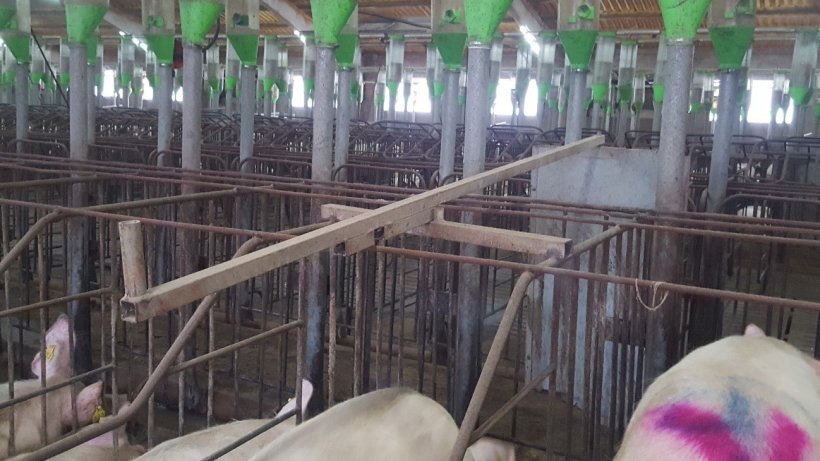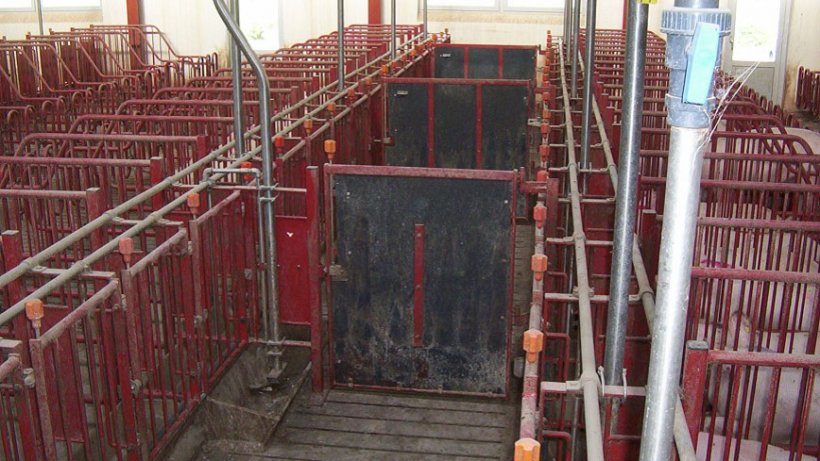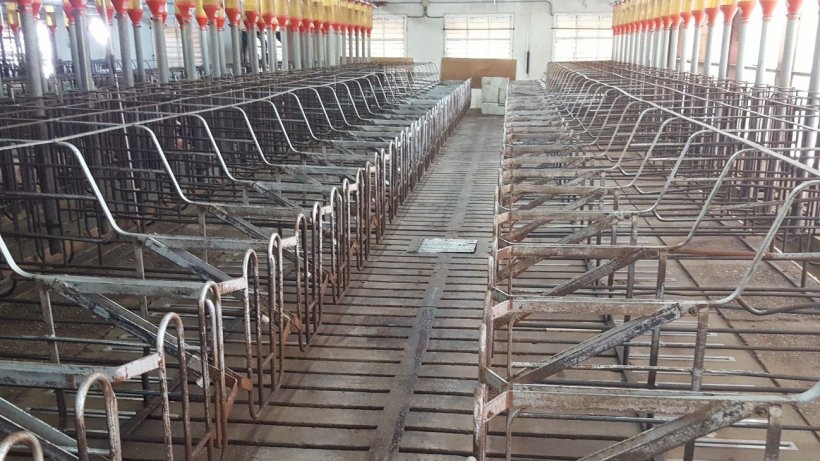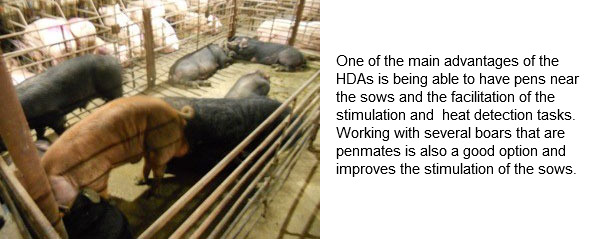On a sow farm, the most important part of the investments is allotted to the farrowing rooms. They demand most of the attentions when a new farm or a refurbishment is planned, due to the cost of each pen, the importance it has for the results of the farm, and the vast number of options in the market regarding the flooring, the crate design, the feeding systems, etc.
Likewise, at least in Europe, since the implementation of the welfare measures, group housing gestation is an area of the farm with different design options that requires knowledge and evaluation of the different options.

On the other hand, the design of the area where the weaned sows will be housed and where they will spend their first month of gestation (what is commonly called the mating/control area) does not trigger great efforts nor the study of alternatives due to its apparent simplicity.
Nevertheless, in this stage, decisive actions for the success of a farm are carried out, such as the heat detection, the inseminations and the feeding during the first third of the pregnancy. Due to this, in this article we will assess, with three experts (Javier Lorente, Joan Aparicio and Lluís Ferrer), aspects regarding the mating/control area that have an implication on the modus operandi and the obtaining of good results.
In this first article we will talk about matters regarding concepts and general design, and in the second one about specific elements (crates, flooring, etc).
Inseminate and straight into group housing?
There is a previous question that we must not ignore: Is it really necessary to have a specific mating area? Since the obligation, in Europe, of housing the sows so they have freedom of movement as of day 28 of gestation, some farms choose to have a specific area to place the weaned sows and to mate them, and after that, take them to the group housing pens. We asked our experts about this option.
Ferrer is convincing: “We frequently forget that the sows are highly hierarchic animals. So, the less we force them to establish a pecking order the better. Besides, the modern genetics are very productive, but they are not exactly famous for their leg soundness"
Lorente thinks that this matter is evolving: “The truth is that introducing the sows into the pens of group housing after mating causes some fears, but increasingly more farms are obtaining good results by doing this. It will be an option to bear in mind in the future on farms with an excellent management. It will probably be also easier with some genetics than with others, as some of them are calmer and facilitate this process”.
Heat detection specific area (HDA) ?
A second unavoidable question deals with the option of having a heat detection area (HDA) or specific area where the stimulation work for the sow to come in heat is concentrated, where the boars used for heat detection are housed, and the sows, once mated, are moved to the stalls of the control area. Another option is weaning and inseminating in the mating/control area where the sows will be housed for their first month of gestation.
Aparicio prefers not having a specific area for weaning, because it entails an extra movement of the sows. “I work by placing the sows following a weekly order. When they are weaned, I prefer to house them in the stalls where we will perform heat detection, we will mate them, and the sow will remain there until they are confirmed pregnant and moved to the group housing pens.”
Lorente signs up for this idea but sets conditions. All the mating area must have the conditions for a correct heat detection and insemination. These conditions are:
- Doors at least every 5 sows that allow “holding” the boar in front of the sows whose heat is being detected or that are being inseminated (we will work with 10 sows at the most at the same time: 5 on each side). The worker that detects heats or inseminates must be able to control these sows from the rear (photos 1 and 2).

The doors in the front corridor facilitate heat detection and mating. It is very important that the doors can be opened and closed from behind.

The doors in the front corridors must close every 5 stalls to allow heat detection and mating of groups of 10 sows.

- The front corridors must have enough space for several boars at the same time.
In case that we do not have these conditions in the whole mating area, Lorente would prefer a specific heat detection area with these means.
Ferrer also supports the HDA: having all the boars near makes things easier (photo 2). If the HDA is beside the gestation/control area, this extra movement does not entail excessive work. For him, the doors must be located every 10 sows at the most.
Building design
“If I could do it, the ideal design on a new farm with a high number of sows is having an individual room for each weekly or batch mating group. In this way we can perform an All-In-All-Out for every batch, cleaning between batches,” explains Lorente.
Aparicio would design the mating/control area with space for 5 weeks of matings but leaving an extra space worth one or even two week of animals to allow for the anoestrus problems in summer or specific moments when the mating targets must be increased. In any case, it must be possible to clean all the crates and the insemination area corresponding to a weekly batch when the sows are moved as confirmed pregnant to a different area and before entering a new batch of sows (photo 3).

We must allow for a little extra space that allows for the routine cleaning operations of the area where we will house the weaned or mated sows.
None of the authors bets for weaning straight into pens. “The coming into heat of the animals is just as good in stalls if we make a good stimulation work with a boar in the front corridor. We will also have less lameness problems,” Ferrer says.
But, as Aparicio notes, there should be some pens that allow to stimulate sows that take longer to cme on heat and also gilts. And, of course, for the boars Lorente insists. “For me, the more boars the better.”

Therefore, we must assess several possibilities before designing the mating/control unit. Each farm must assess the one that suits their conditions, management, genetics, etc. better.



